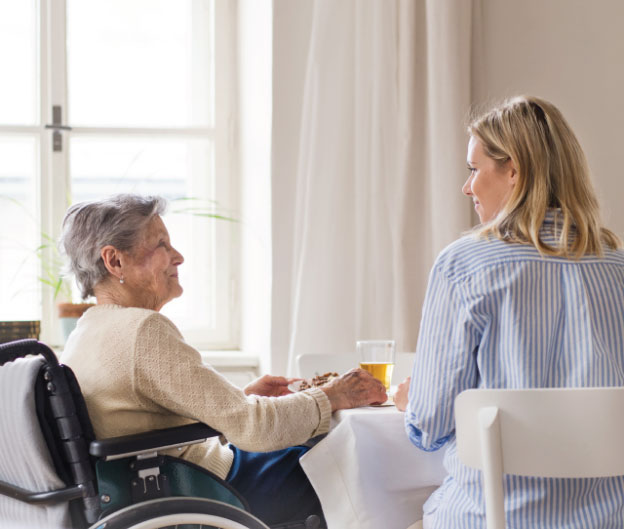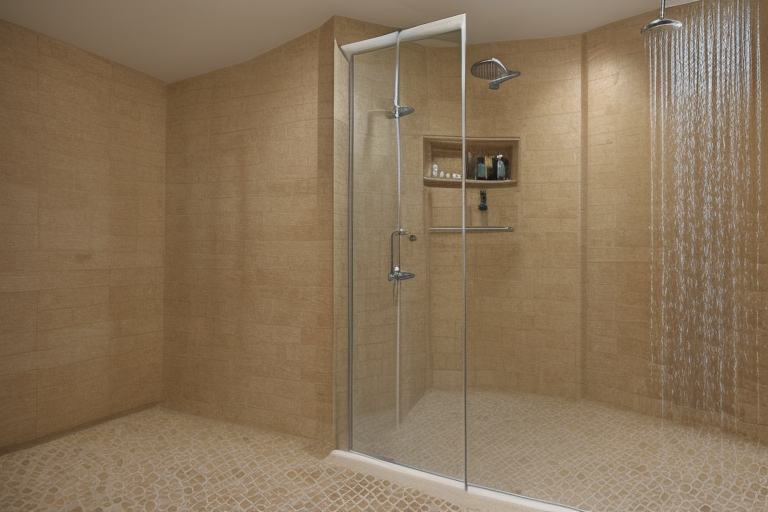Aged care homes stand as critical environments where the welfare of the elderly and workers intersects amid complex challenges. These facilities are not just homes but unique workplaces that demand attentiveness to hazards in aged care, encompassing manual handling hazards, infection control, and environmental threats[1]. As Australia’s population ages, the aged care industry faces increased demands, stressing the importance of safeguarding against risks such as sprains, strains, fatigue, influenza, and more through health and safety measures, including personal protective equipment and stringent infection control protocols[2].
Addressing these concerns requires a comprehensive approach, from enhancing fall prevention in nursing homes to tackling workplace violence and ensuring personal safety in aged care. By exploring these various dimensions—physical, psychological, environmental, and beyond—this article aims to shed light on effective strategies for reducing personal safety risks in aged care, mitigating biological hazards, and ultimately creating a safer environment for both the elderly and the caregivers[1][2].
Physical Hazards in Aged Care
In the realm of aged care ,physical hazards in aged care pose significant risks to both the elderly and the caregivers. Understanding and mitigating these hazards are crucial steps in ensuring a safe environment for all.
- Lifting and Handling Injuries:
- Common Causes: Workers often have to lift patients, leading to back and neck injuries[3]. Manual handling hazards in aged care also include physical stress from lifting, moving, or handling patients or equipment, contributing to strains, sprains, and occupational overuse syndrome (OOS)[5].
- Preventive Measures: Proper training, regular checks on equipment quality, and individual risk assessments can significantly reduce moving and handling incidents and injuries[4]. Manual handling is the most common cause of injuries, accounting for 58% of all injuries in aged care facilities, emphasizing the need for stringent safety protocols[2].
- Environmental and Equipment-Related Hazards:
- Falls: Trips, slips, and falls are prevalent, often caused by contaminants, poor lighting, uneven floor surfaces, or worn parts. Poorly maintained stairways and green spaces are linked to higher odds of falling, especially for older adults living alone[4][9].
- Equipment Use: Regular checks on the quality, suitability, and maintenance of equipment are necessary to prevent injuries for staff and residents. Bedrails, for instance, should only be used when deemed the best solution to prevent falls, with individualized risk assessments for each person[4].
- Temperature and Fire Safety: Controlling temperature to prevent burns and conducting regular fire safety risk assessments, inspections, and cleanings are essential measures[4].
- Medication and Fire Safety:
- Medication Errors: Can be prevented by having clear rules, guidance, policies, and procedures, along with regular training and Food Safety Management System (FSMS) implementation[4].
- Fire Safety: Requires regular risk assessments, inspections, and cleanings in line with risk assessments to mitigate the risk of fire outbreaks[4].
Creating a safer environment in aged care facilities involves a multi-faceted approach, focusing on reducing manual handling hazards, improving environmental safety, and ensuring the correct use and maintenance of equipment. Regular training, clear safety protocols, and individual risk assessments are key strategies in safeguarding the well-being of both the elderly and the caregivers.
Infection Control Challenges
Infection control challenges in aged care facilities are multifaceted, requiring stringent measures to safeguard the health of both the elderly and the caregivers. Key aspects of infection control include:
- Proper Hand Hygiene and Use of Personal Protective Equipment (PPE): Essential practices to prevent the spread of infections, encompassing gloves, masks, and gowns to protect against direct contact with infectious agents[3].
- Safe Handling Practices and Waste Disposal: Critical for minimizing risk, especially in dealing with potentially contaminated materials or surfaces[3].
- Sterilization Risks: While cleaning agents like ethylene oxide are vital for sterilization, they also pose risks such as respiratory tract infections and chemical burns, highlighting the need for careful handling and adequate ventilation[8].
Federal and state regulations play a crucial role in ensuring the effectiveness of infection control programs within nursing homes:
- Regulatory Requirements: Federal nursing home laws mandate each facility to maintain an infection control program aimed at investigating, controlling, and preventing infections, underscoring the regulatory framework guiding these efforts[8].
- Inspection and Monitoring: Regular inspections, including air, bulk, or water sampling, serve as early warning systems for mould and bacteria hazards in aged care, facilitating timely corrective actions[12].
The challenges of infection control are compounded by the unique characteristics of the elderly population and the structural and process factors within nursing homes:
- Unique Vulnerabilities: Older adults present special challenges due to host factors such as diagnostic uncertainty and rapid staff turnover, structural concerns like high staff turnover and limited information systems, and process factors including variable staff education and use of quality improvement tools[13].
- Emerging Diseases: The rapid spread of infectious diseases like COVID-19 and antimicrobial-resistant infections pose significant challenges, necessitating preparedness and quick response from healthcare facilities to protect all individuals within the environment[14].
- Technology and Staffing: The adoption of automated infection prevention surveillance software systems is essential for improving accuracy, ensuring time efficiency, and supporting effective infection prevention and control (IPC) programs. However, staffing challenges and inadequate supplies or equipment can hinder the ability to provide safe and effective patient care[14].
In addressing these infection control challenges, it’s imperative that aged care facilities adopt a comprehensive approach, integrating regulatory compliance, advanced technology, and tailored strategies to meet the unique needs of the elderly population.
Emotional and Psychological Wellbeing
Emotional and psychological well-being in aged care settings is a complex issue, influenced by a range of factors inherent to the caregiving profession. Workers face unique challenges that necessitate a robust support system to manage stress effectively and maintain mental health.
- Support Systems and Stress Management:
- Emotional and psychological hazards in aged care are prevalent among aged care workers, highlighting the need for comprehensive support systems and stress management training[3].
- Implementing open-door policies can foster an environment where workers feel comfortable discussing their concerns, contributing to better mental health outcomes[3].
- Psychosocial Hazards in aged care:
- Key Factors: Role overload, low job control, conflict, poor workplace relationships, and bullying are significant psychosocial hazards in aged care settings[6].
- Impact: These factors can trigger a stress response, adversely affecting the well-being of care workers and, by extension, the quality of care provided to residents[6].
The residents ofnursing homes also face considerable emotional and psychological challenges, with a significant portion experiencing mental health disorders.
- Mental Health in Nursing Homes:
- Prevalence: Between 65% to 90% of nursing home residents are affected by mental disorders, ranging from anxiety and depression to more severe conditions like schizophrenia and bipolar disorder[16].
- Care Challenges: Staff often lack the necessary training and resources to effectively support residents with mental illnesses, leading to inadequate care and oversight[16].
- Overlooked Symptoms: Symptoms of mental health conditions can be mistaken for the normal aging process, resulting in overlooked or untreated conditions[16].
- Contributing Factors: Several factors contribute to mental health issues in nursing homes, including social isolation, chronic pain, loss of independence, and abuse or neglect[16].
- Improvement Strategies: Promoting independence and implementing nonpharmacological therapeutic approaches are crucial steps towards improving mental health care in nursing homes[16][17].
Addressing the emotional and psychological well-being of both caregivers and residents in aged care facilities requires a multifaceted approach. For caregivers, creating a supportive work environment and providing adequate stress management resources are essential. For residents, ensuring proper mental health care, recognizing the signs of emotional distress, and fostering a sense of community and autonomy can significantly enhance their quality of life.
Workplace Violence and Safety
Workplace violence in aged care settings is a critical issue, with both employees and residents facing potential risks. The nature of these incidents can range from physical attacks to verbal threats, often stemming from the complex needs of patients dealing with mental health issues, dementia, or physical limitations. Understanding the scope and implementing protective measures is essential for ensuring a safe environment for all involved.
- Nature and Scope of Workplace Violence:
- Aged care workers may encounter violence from patients due to mental health issues, physical issues, or dementia, making workplace violence a significant concern in these settings[3].
- Healthcare workers, including those in aged care, are five times more likely to experience workplace violence injuries compared to other professions, with 73% of all nonfatal workplace violence-related injuries involving healthcare workers in 2018[18][22].
- The most common forms of workplace violence in healthcare settings, including aged care, are verbal abuse (71.9%) and physical assaults, with doctors often being the most exposed group[20].
- Risk Factors and Protective Strategies:
- Key risk factors for workplace violence include patient mental health disorders, dementia, and intoxication. Environmental factors such as the time of day and the presence of weapons also play a role[19].
- Protective strategies against workplace violence include carrying a telephone, self-defence measures, seeking self and social support, and limiting interactions with known or potential perpetrators[19].
- To mitigate these risks, aged care facilities must assess risk factors and develop comprehensive plans to address workplace violence, including increasing penalties for assaults against healthcare workers[22].
- Legislative and Organizational Measures:
- The Workplace Health and Safety Act 2011 mandates aged care facilities to ensure worker safety, requiring a safe work environment, proper training, and emergency preparedness[1].
- Facilities should develop a written health and safety policy tailored to their needs, covering management procedures for health and safety, roles and responsibilities, and health and safety training[1].
- Employers must engage in risk assessment, regularly review the effectiveness of control measures, and consult with staff on health and safety issues to identify and address current practice problems[1].
By addressing the multifaceted aspects of workplace violence in aged care, from understanding its nature and scope to implementing legislative and organizational measures, facilities can create a safer environment for both caregivers and residents.
Environmental Hazards in Aged Care
Environmental hazards in aged care facilities pose a significant risk to both residents and staff, necessitating vigilant management and preventive strategies. These hazards range from physical conditions likewet surfaces to the presence of hazardous substances, each contributing to the potential for injury or illness.
- Wet Surfaces and Cleaning Procedures:
- Wet Surfaces: A common environmental hazard, wet surfaces can lead toslips and falls, which are among the most frequent accidents in aged care settings[3][6]. Ensuring floors are dry and promptly addressing spills is crucial for prevention.
- Cleaning Procedures: Inadequate cleaning procedures not only contribute to the risk of slips but can also lead to the spread of infections. Regular and thorough cleaning protocols are essential to mitigate these risks[3].
- Hazardous Substances and Temperature Control:
- Contact with Hazardous Substances: Exposure to cleaning chemicals or medications without proper protective measures can lead to injuries or health issues for staff and residents. Implementing safety protocols, including the use of Personal Protective Equipment (PPE), is vital[2].
- Water Temperature Control: To prevent Legionnaires’ disease, it’s crucial to control water temperature, storing it at 60°C or higher, ensuring the elimination of legionella bacteria[4].
- Physical Environment and Equipment:
- Slips on Wet or Food-Contaminated Floors: Such incidents are common in aged care facilities and can be prevented by maintaining clean and dry floor surfaces[3].
- Sharp Objects and Falling Items: Being struck by or colliding with sharp objects or falling items can cause serious injuries. Regular checks and proper storage of such items can significantly reduce these risks[2].
- Stress from Work Environment: The physical layout and operational stressors of the work environment can contribute to psychological stress, highlighting the need forergonomic design and stress management practices[2].
Addressing environmental hazards in aged care requires a comprehensive approach, focusing on both the physical and operational aspects of the facility. Regular training, clear protocols, and a commitment to safety can significantly reduce these risks, ensuring a safer environment for both residents and caregivers.
Fatigue and Burnout among Caregivers
Fatigue and burnout among caregivers in aged care settings are pressing issues that demand attention for the well-being of both the caregivers and those they support. The complexity ofcaregiving roles, coupled with the emotional and physical demands, sets the stage for these challenges.
- Understanding Fatigue and Burnout:
- Definition: Caregiver burnout is a state of physical, emotional, and mental exhaustion that stems from the responsibilities of caring for others[23].
- Symptoms: Common signs include fatigue, anxiety, depression, feelings of helplessness, and neglect of personal health[23][24].
- Causes: High demands and emotional intensity of caregiving tasks contribute significantly to fatigue and burnout[3]. Factors such as role confusion, lack of control, and unrealistic expectations amplify these challenges[23][24][25].
- Risk Factors and Prevention:
- Risk Factors: Being a caregiver, especially in high-stress environments or without adequate support systems, increases the risk[23]. Long-term caregiving, severity of the care recipient’s condition, and personal neglect are significant contributors[25][26].
- Preventive Measures: Engaging in self-care practices, setting realistic goals, and seeking external support through respite care or mental health professionals can mitigate risks[23]. Learning about the illness or condition being cared for and accepting one’s feelings are crucial steps[23].
- Strategies for Managing Caregiver Burnout:
- Self-Care and Resilience Building: Prioritizing personal health, practicing meditation, and participating in group or talk therapy are key[23][26].
- Support and Resources: Utilizing resources such as the Family Care Navigator and American Psychological Association can provide crucial support and information[26].
- Professional Development: Engaging in training and shared learning opportunities helps caregivers manage stress and improve care quality[28][29].
The multifaceted nature of caregiver roles in aged care necessitates a comprehensive approach to address fatigue and burnout. By recognizing the symptoms, understanding the risk factors, and implementing targeted strategies, caregivers can safeguard their well-being while providing high-quality care[23][24][25][26].
Implementing Effective Training and Policies
To ensure a comprehensive approach towards safeguarding the elderly and workers in aged care, implementing effective training and policies is paramount. This involves a series of steps aimed at enhancing workplace safety and health standards:
- Workplace Safety and Health Training:
- Employers are obligated to provide a safe work environment along with necessary information, instruction, training, and supervision[1][30].
- Employees, in turn, must adhere to safety rules, take reasonable care for their own health and safety, report unsafe practices, and cooperate with their employers[1].
- Regular training sessions should be conducted at least annually to keep all staff updated on the latest safety protocols and procedures[31].
- Risk Assessment and Control Measures:
- A systematic risk assessment process should be in place, including hazard identification, risk assessment, and implementing control measures[1].
- Control measures can range from elimination and substitution to engineering controls, administrative controls, and the use of personal protective equipment[1].
- The effectiveness of these measures should be reviewed at least annually, with workers involved in identifying problems and suggesting improvements[1].
- Manual Handling and Patient Care:
- The manual handling code of practice aims to minimize injuries by eliminating manual lifting of patients, promoting patient independence, and utilizing lifting aids like ceiling hoists and sliding devices[7].
- Training for caregivers should include lifting techniques that reduce injury risk, such as using legs for lifting, maintaining balance, and team coordination[7].
- Additionally, caregivers should receive comprehensive training on Alzheimer’s disease, dementia care, diet and nutrition, medication administration, and recognizing signs of abuse[34].
By adhering to these guidelines and continuously improving training and policies, aged care facilities can create a safer and more supportive environment for both the elderly and their caregivers.
Conclusion
As we navigate the complexities inherent in safeguarding the elderly and workers in aged care environments, it becomes clear that a comprehensive approach is essential. Efforts to mitigate physical hazards in aged care, infection control challenges, emotional and psychological well-being, workplace violence, environmental risks, and the pressing issues of fatigue and burnout among caregivers underscore the multifaceted nature of aged care safety. By leveraging effective training, policy implementation, and fostering an environment of awareness and proactive risk management, significant strides can be made in enhancing the health and safety standards for all involved in aged care.
The significance and implications of addressing these challenges extend far beyond the immediate context of aged care facilities, reflecting on broader societal values of dignity, respect, and care for the elderly and those who support them. As we move forward, the collective engagement in continuous improvement, adherence to regulatory requirements, and the embracing of innovative solutions will serve as the cornerstone for creating safer, more resilient environments. In doing so, we not only protect those at their most vulnerable but also uplift the dedicated individuals who provide care, ensuring their well-being and enabling them to perform their vital roles with confidence and security.
FAQs
What are common dangers encountered in aged care workplaces?
Hazards in aged care workplaces typically include:
- Workplace violence and aggression.
- Incidents of slips, trips, and falls.
- Muscular stress due to handling tasks.
- Psychosocial issues such as stress from moving people, low job control, injuries related to manual handling, and poor workplace relationships.
What is an example of an environmental hazard in aged care?
An example of an environmental hazard in aged care is poor air quality due to inadequate ventilation or the presence of contaminants. This can include:
- Airborne infectious agents: Respiratory infections can spread more easily in poorly ventilated spaces, putting residents and staff at risk.
- Allergens and irritants: Dust, pollen, or cleaning product fumes can exacerbate respiratory conditions like asthma or allergies.
- Temperature extremes: Overly hot or cold temperatures can be particularly dangerous for elderly residents who may have difficulty regulating their body temperature.
- Mould growth: Damp or humid conditions can lead to mould growth, which can cause respiratory problems and other health issues.
What constitutes a hazard in care work?
Hazards in aged care work may encompass a range of issues such as:
- Unsafe or insufficient water for drinking and washing.
- Inadequate sanitation and hygiene practices.
- Dangerous healthcare waste.
- Climate-related risks that have the potential to cause diseases and injuries among health workers.
What are the hazards in a care home?
Care homes can present a variety of hazards, including:
- Physical hazards: Slips, trips, and falls due to wet floors, poor lighting, or cluttered spaces; burns from hot surfaces or liquids; and injuries from manual handling tasks.
- Biological hazards: Exposure to infectious diseases, such as influenza, COVID-19, or gastrointestinal illnesses, which can spread rapidly in a care home setting.
- Chemical hazards: Exposure to cleaning products, medications, or other substances that may cause skin irritation, respiratory issues, or other adverse health effects.
- Psychological hazards: Stress, burnout, and emotional exhaustion among care home staff due to high workloads, challenging resident behaviors, or inadequate support.
- Environmental hazards: Poor air quality, extreme temperatures, or noise pollution that can impact the health and well-being of residents and staff.
What are 3 common hazards you might find in a healthcare setting?
Three common hazards in a healthcare setting include:
- Infectious diseases: Healthcare workers are at risk of exposure to various pathogens, such as bloodborne viruses (e.g., HIV, hepatitis B and C), respiratory infections (e.g., influenza, tuberculosis), and antibiotic-resistant bacteria (e.g., MRSA).
- Musculoskeletal disorders: Healthcare workers often perform tasks that involve lifting, transferring, or repositioning patients, which can lead to back injuries, strains, or sprains.
- Slip, trip, and fall hazards: Wet or polished floors, cluttered walkways, and poor lighting can increase the risk of slips, trips, and falls for both healthcare workers and patients.
[1] –https://www.kirialign.com/blogs/workplace-health-and-safety-in-aged-care-definitive-guide-2021
[2] –https://jobsafesa.asn.au/industries/aged-care/
[3] –https://linksafe.com.au/articles/top-3-hazards-in-aged-care-and-how-to-avoid-them/
[4] –https://www.theaccessgroup.com/en-gb/blog/hsc-hazards-in-a-care-home-the-best-ways-to-prevent-common-hazards/
[5] –https://cloudassess.com/blog/manual-handling-hazards-aged-care/
[6] –https://www.safework.nsw.gov.au/your-industry/health-care-and-social-assistance/aged-care
[7] –https://www.activemobility.com.au/blog/manual-handling-hazards-in-aged-care
[8] –https://nursinghomeabuseguide.com/environmental-risks/
[9] –https://academic.oup.com/innovateage/article/7/6/igad055/7199517
[10] –https://pocketstop.com/blog/top-5-safety-hazards-in-a-senior-living-facility/
[11] –https://bmcgeriatr.biomedcentral.com/articles/10.1186/s12877-021-02499-x
[12] –https://www.atlenv.com/bacteria-mold-senior-housing
[13] –https://www.ncbi.nlm.nih.gov/pmc/articles/PMC3061471/
[14] –https://www.wolterskluwer.com/en/expert-insights/3-key-challenges-facing-infection-prevention-and-control-programs
[15] –https://www.physio-pedia.com/Infection_Control_in_Older_Adults
[16] –https://www.nursinghomeabusecenter.com/resources/mental-health-in-nursing-homes/
[17] –https://www.ncbi.nlm.nih.gov/pmc/articles/PMC2981653/
[18] –https://psnet.ahrq.gov/perspective/addressing-workplace-violence-and-creating-safer-workplace
[19] –https://www.ncbi.nlm.nih.gov/pmc/articles/PMC8890760/
[20] –https://www.ncbi.nlm.nih.gov/pmc/articles/PMC10381052/
[21] –https://www.ojp.gov/ncjrs/virtual-library/abstracts/workplace-violence-and-worker-injury-elderly-care-settings
[22] –https://www.pbs.org/newshour/show/whats-behind-an-alarming-rise-in-violent-incidents-in-health-care-facilities
[23] –https://my.clevelandclinic.org/health/diseases/9225-caregiver-burnout
[24] –https://www.hopkinsmedicine.org/about/community-health/johns-hopkins-bayview/services/called-to-care/causes-symptoms-caregiver-burnout
[25] –https://www.cc-nh.org/caregiver-burnout-risk-factors-causes/
[26] –https://www.helpguide.org/articles/stress/caregiver-stress-and-burnout.htm
[27] –https://www.ncbi.nlm.nih.gov/pmc/articles/PMC7644552/
[28] –https://www.ncbi.nlm.nih.gov/pmc/articles/PMC10084219/
[29] –https://eldercareworkforce.org/education-training-meeting-the-needs-of-older-adults/
[30] –https://www.worksafe.vic.gov.au/aged-care-safety-basics
[31] –https://hign.org/consultgeri-resources/guides-and-competencies/best-practices
[32] –https://www.ageways.org/advocacy/caregiver-community-assessment/best-practices-caregiver-training-and-education/
[33] –https://www.caringsupport.com/blog/best-practices-for-staffing-and-training-in-senior-care
[34] –https://www.yourtrainingprovider.com/the-5-most-important-training-topics-for-senior-care-professionals/
[35] –https://www.ncbi.nlm.nih.gov/pmc/articles/PMC1494909/
[36] –https://www.ncbi.nlm.nih.gov/pmc/articles/PMC10015942/
[37] –https://www.ncbi.nlm.nih.gov/books/NBK481879/
[38] –https://www.whitehouse.gov/briefing-room/statements-releases/2022/02/28/fact-sheet-protecting-seniors-and-people-with-disabilities-by-improving-safety-and-quality-of-care-in-the-nations-nursing-homes/
[39] –https://pso.ahrq.gov/sites/default/files/wysiwyg/strategies-improve-patient-safety-final.pdf










